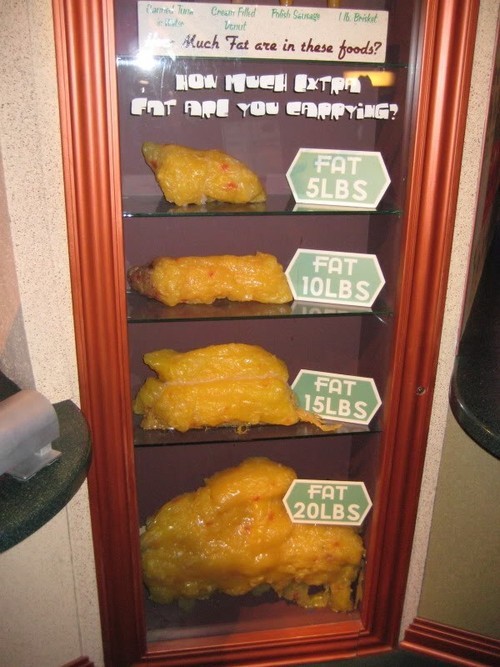 |
| (Source) |
The rest of the series:
Part 1: Track body fat % instead of weight
Part 2: Using a body fat scale.
Part 4: How to track your progress using body fat %
Part 5: Other measurements you can use to track your progress.
First of all, let's take a look at the body composition ranges provided by the American Council on Exercise (source). Just as you might expect, the desired ranges can very slightly based on age and the approach used by the group that publishes them, but the variations are fairly minimal.
Men:
- 2 – 5% Essential fat.
- 6 – 13% Athletes
- 14 – 17% Fitness
- 18 – 24% Average
- 25%+ Obese
Women:
- 10–13% Essential fat
- 14–20% Athletes
- 21–24% Fitness
- 25–31% Average
- 32%+ Obese
Right off the bat, you probably have two questions. First, what's with "essential fats"? Just as the name implies, essential fats are needed for the body to function properly. It is stored inside organs, bone marrow, muscles, and elsewhere. All of the additional fat is in the form of storage fats. Some of these fats serve the very important purpose of protecting your internal organs while the remainder is stored just under the skin. We all know that having too much fat is unhealthy, but not having enough body fat is very dangerous as well.
The purpose of storage fat is to store energy for future use when food may not be as readily available. In our times where food is in abundant supply and we aren't as active as our distant ancestors were, we store more fat than we'll ever need. We have no control over where our bodies will store this extra fat, we can only influence how much or how little our bodies have to store. This gets back to something I've harped on in the past: Muscle is built specifically and fat is burned generally.
The second obvious question: what's with the significant difference between men and women? There are a lot of areas in fitness where there are false barriers between men and women. For one, a lot of people still think women should not lift weights. Well, I disagree, as does just about everyone else in the fitness profession. On the flip side, a lot of men think they shouldn't do too much cardio and think that greasy food is somehow masculine. That is a post for another day. Unlike all of the incorrect divisions between the sexes, body fat is an aspect of fitness where there is a real division between the sexes. Women require an additional 10% worth of body fat to support healthy reproductive function and childbearing. Without that additional essential body fat, a woman would be at risk for very serious health problems.
Once we've accounted for that quantity of essential body fat, the differences between men and women aren't as much as you might think. Granted, men tend to store fat in the belly while a lot of women store more in their hips and thighs. Again, we can't influence where the fat is stored through specific exercises, but we can influence how much is stored.
In the next installment, I'll finally get into the topic of using body fat % to track your long-term progress.
 |
| This shows what excess storage fat looks like. (Source) |
The second obvious question: what's with the significant difference between men and women? There are a lot of areas in fitness where there are false barriers between men and women. For one, a lot of people still think women should not lift weights. Well, I disagree, as does just about everyone else in the fitness profession. On the flip side, a lot of men think they shouldn't do too much cardio and think that greasy food is somehow masculine. That is a post for another day. Unlike all of the incorrect divisions between the sexes, body fat is an aspect of fitness where there is a real division between the sexes. Women require an additional 10% worth of body fat to support healthy reproductive function and childbearing. Without that additional essential body fat, a woman would be at risk for very serious health problems.
Once we've accounted for that quantity of essential body fat, the differences between men and women aren't as much as you might think. Granted, men tend to store fat in the belly while a lot of women store more in their hips and thighs. Again, we can't influence where the fat is stored through specific exercises, but we can influence how much is stored.
In the next installment, I'll finally get into the topic of using body fat % to track your long-term progress.
No comments:
Post a Comment